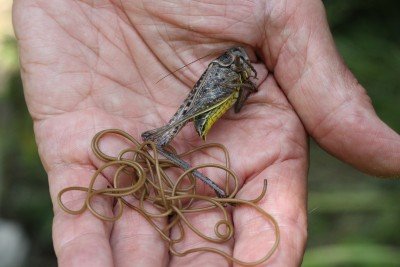
The wolf worm, primarily the larvae of the *Cuterebra* fly, typically targets mammals, particularly rodents and rabbits. But it doesn’t stop there; these pesky critters can also affect larger animals, including foxes and even domestic pets. To effectively help these animals, rescuers need to identify wolf worms accurately and understand their life cycle. This will not only aid in treatment but also in preventing further infestations.
What Are Wolf Worms?
Wolf worms are the larvae form of certain flies from the *Cuterebra* genus. Think of them as little invaders that use mammals as their host. They usually enter through the skin, causing various levels of distress depending on the animal’s health and the worm’s lifecycle stage.
These larvae can be found in various rural environments, particularly where wildlife is abundant. Despite their name, wolf worms aren’t directly associated with wolves but can affect a wide range of wild and domestic animals. With the right information, wildlife rescuers can spot these infections early and take action.
How Do Wolf Worms Affect Animals?
When wolf worms invade, they can cause significant health issues for their host. Here’s the thing: if a mammal is infested, it can lead to infections, abscesses, and even more severe health complications if left untreated.
**Symptoms to watch for include:**
- Swelling at entry points
- Visible holes or wounds
- Behavioral changes (like excessive grooming)
- Signs of pain or distress
For animals, these symptoms can manifest differently based on the species and health status. For instance, a healthy rabbit might show mild symptoms, while an older or sickly animal could suffer more intensely. Understanding these effects helps rescuers know what to look for when treating wildlife.
Identifying Wolf Worms in the Field
Proper identification is key for anyone involved in wildlife rescue. Here are some tips to help you identify wolf worms effectively:
1. **Look for Entry Points**: The first sign usually comes from examining the skin. Wolf worms create a small hole where they enter. If you see a small, swollen area with a likely hole, it could be a wolf worm.
2. **Examine Behavior**: Watch how the animal behaves. Are they scratching or excessively grooming a particular area? Are they acting different than usual? These signs can point to discomfort caused by an infestation.
3. **Consult Resources**: Drawing from trusted wildlife identification resources can make a big difference. Using pictures and descriptions, rescuers can improve their chances of correctly identifying and diagnosing wolf worm issues.
Common Misconceptions About Wolf Worms
You might be wondering about some of the common myths. One prevalent misconception is that wolf worms are only found in wolves or large carnivores. In reality, these pesky larvae are found across various mammals.
Another myth is that these worms can infect humans. While there are instances of humans getting infected by other types of fly larvae, wolf worms are pretty specific to mammals. Understanding these distinctions is important for wildlife professionals who might encounter these situations frequently.
Treatment and Removal of Wolf Worms
For wildlife rescuers, knowing how to treat wolf worm infestations is critical. Often, the best course of action is to remove the worm carefully. This usually involves:
1. **Disinfecting the Area**: Make sure the surrounding area is cleaned thoroughly to prevent infection.
2. **Gently Extracting the Worm**: Use sterile tools to pull the worm out. This step requires care, as you don’t want to break the larva inside.
3. **Aftercare**: Once removed, the area should be monitored for signs of infection or healing. Applying a topical antibiotic can help.
It’s essential to note that if you’re unsure or uncomfortable handling the situation, seeking help from a veterinarian who specializes in wildlife or exotic animals can be the safest bet.
Preventing Wolf Worm Infestations
Prevention is more straightforward than treatment. Here are some tips for preventing wolf worm infestations in local wildlife:
– **Maintain Clean Environments**: Reducing areas where rodents, rabbits, and wildlife can thrive near human habitats can help decrease infestations.
– **Monitor Wild Animal Populations**: Keeping an eye on wildlife health can enable early intervention if infestations are suspected.
– **Educate the Community**: Raising awareness about wolf worms can empower others in your area to recognize symptoms and take action.
Why Understanding Wolf Worms Matters
Recognizing and treating wolf worm infections is crucial for the overall health of wildlife populations. These parasites can weaken animals, making them more vulnerable to other diseases and predators.
Moreover, local ecosystems thrive when wildlife is healthy. By ensuring that animals can recover from infestations, we support biodiversity and the natural balance of rural environments.
In summary, identifying wolf worms in wildlife rescue isn’t just about spotting a pesky parasite; it’s about ensuring the health and sustainability of our local ecosystems. By understanding how to identify, treat, and prevent these infestations, we play a vital role in wildlife conservation.
Taking action against these little invaders can significantly improve the quality of life for many animals in rural areas. You might be surprised at just how much of a difference informed individuals can make in the lives of these creatures. So, the next time you’re out in the wild, keep an eye out for these signs—your careful observation could help save a life!
